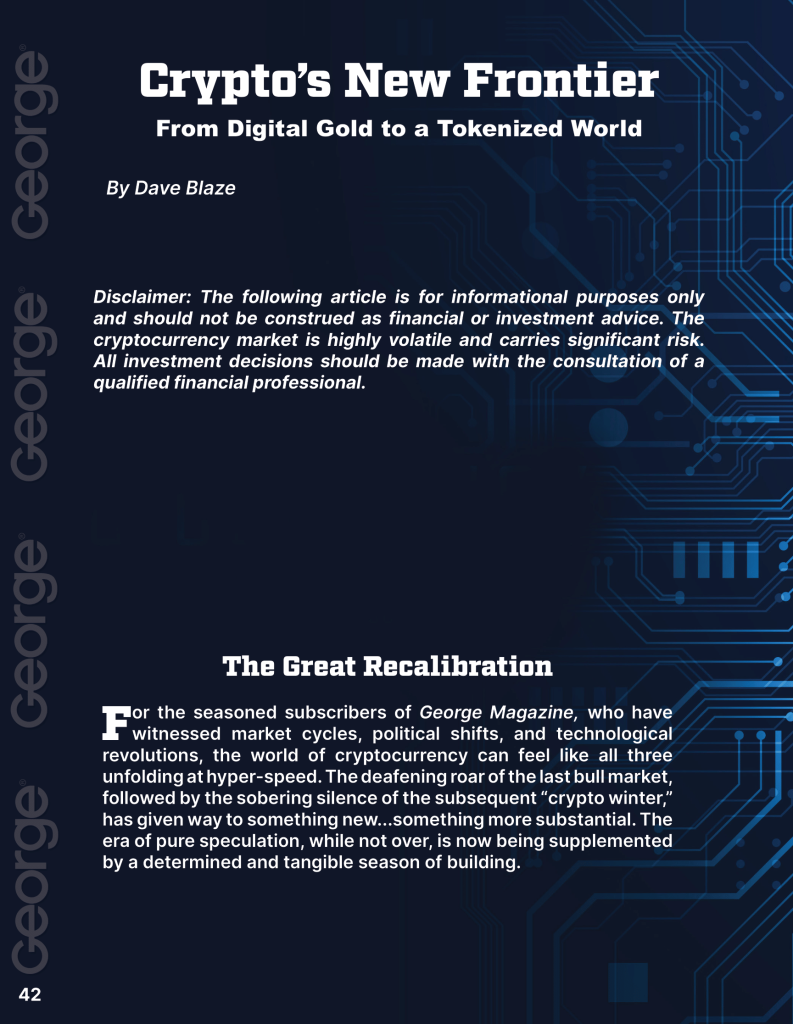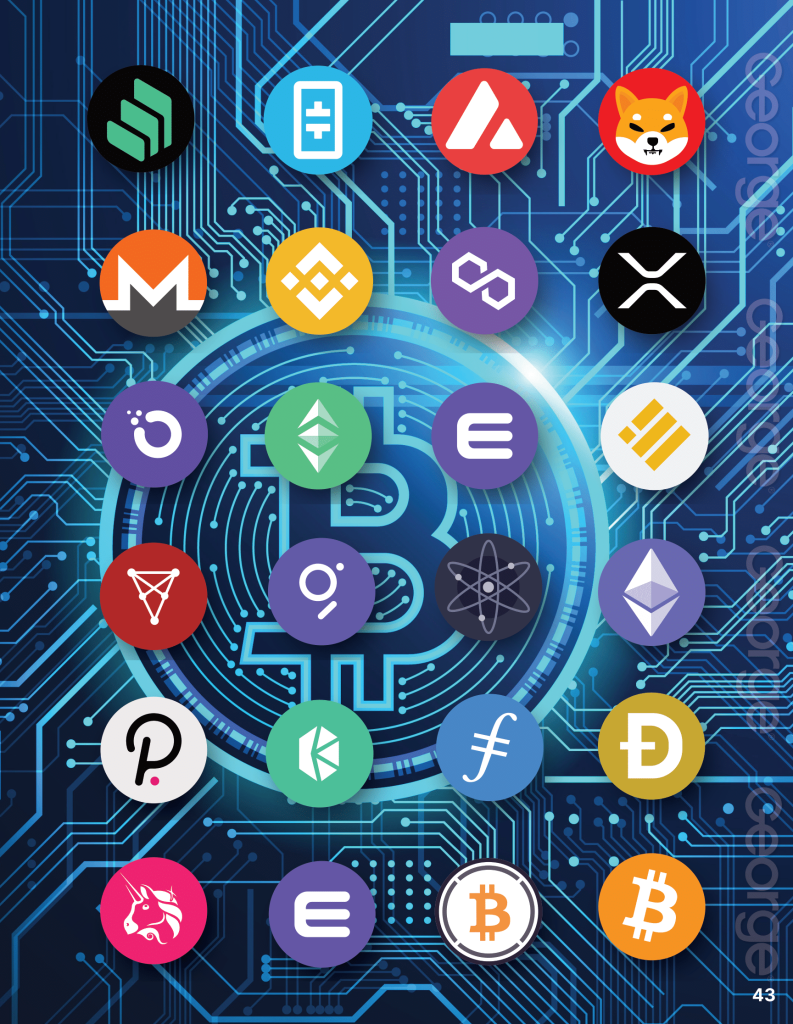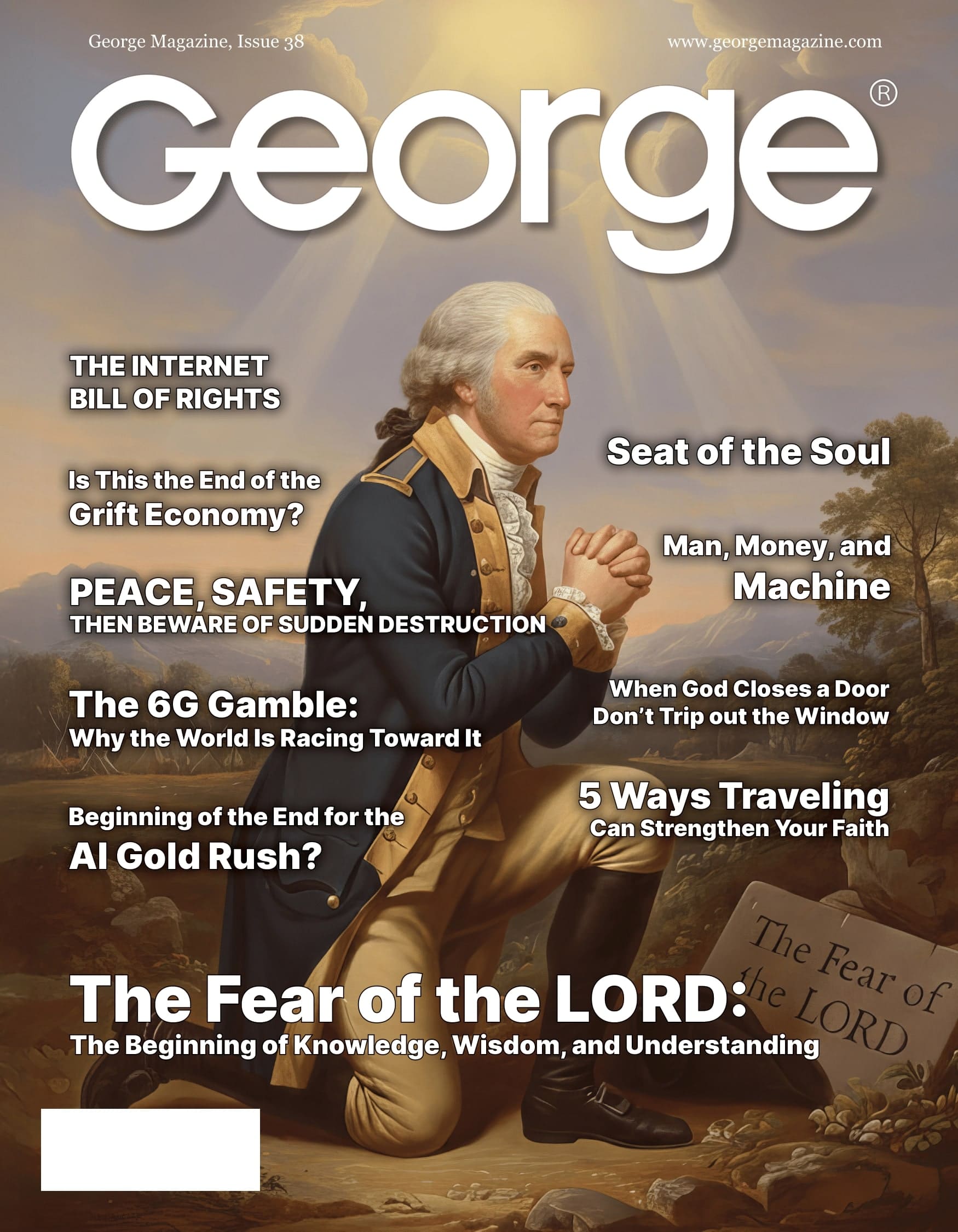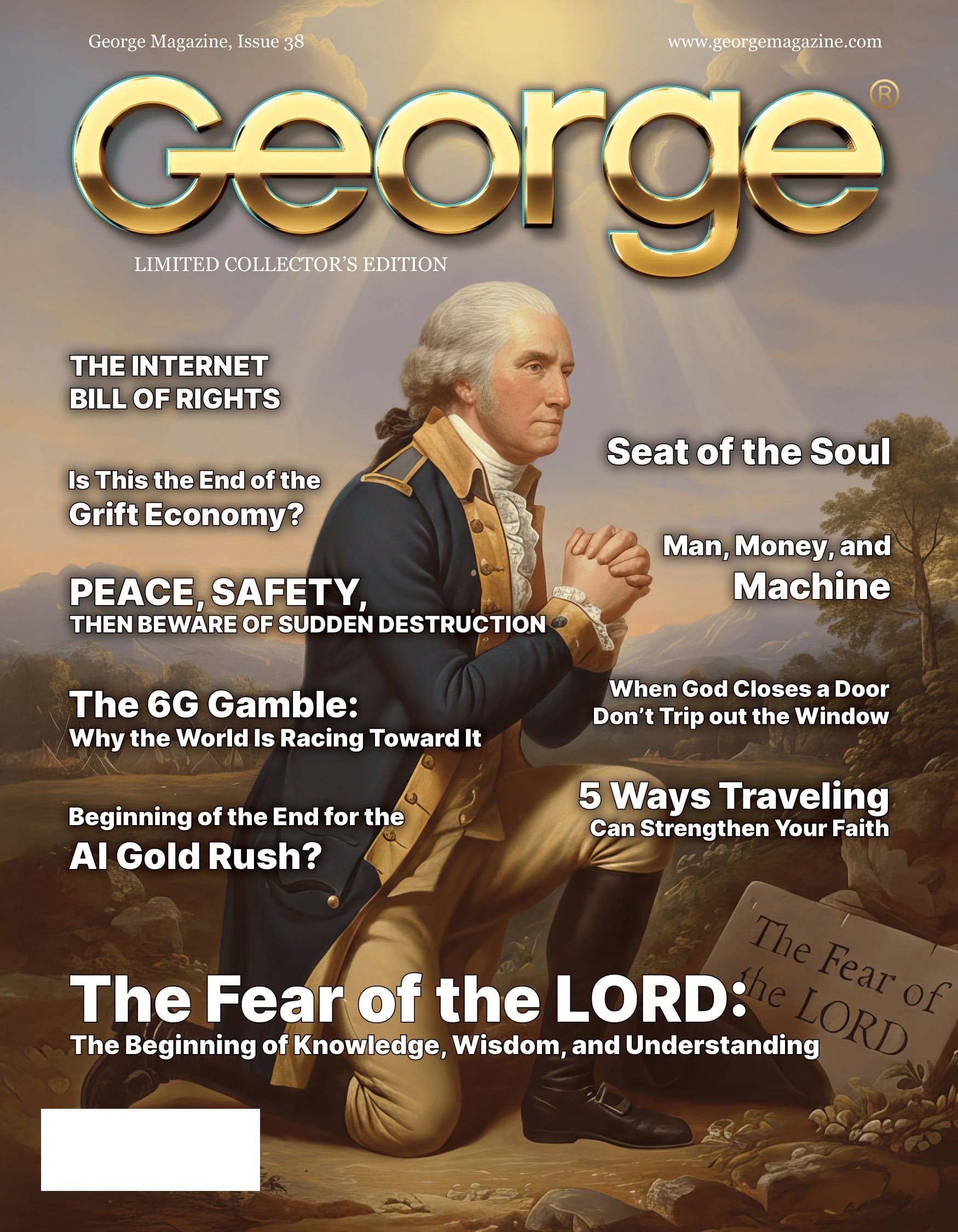As of mid-2025, the landscape of digital assets has matured significantly. The tourists have departed, and the pioneers…engineers, entrepreneurs, and institutional players…are laying the foundation for a more integrated and functional digital economy. For those of you who have invested in this space, understanding the current currents is paramount. We are moving beyond the simple narratives of “digital cash” or “get-rich-quick” schemes into a complex ecosystem where digital assets are beginning to intertwine with the very fabric of our traditional financial and physical worlds.
This report delves into the five most influential trends shaping the cryptocurrency space today: the institutionalization of Bitcoin and the scaling of Ethereum, the seismic shift towards tokenizing real-world assets (RWAs), the burgeoning symbiosis between artificial intelligence and crypto, the evolution of digital ownership beyond JPEGs, and the ever-present, ever-critical spectre of global regulation.
Trend 1: The Maturation of the Majors – Bitcoin and Ethereum Settle In
For years, Bitcoin was an outsider’s asset. Today, it’s increasingly an insider’s allocation. The approval and spectacular growth of spot Bitcoin ETFs in the United States, starting in early 2024, acted as a formal invitation to Wall Street. The result has been a tidal wave of institutional capital, fundamentally altering Bitcoin’s market structure [1]. Pension funds, endowments, and corporate treasuries are no longer just “crypto-curious”; they are actively developing strategies for digital asset allocation.
This influx has solidified Bitcoin’s primary narrative as “digital gold”…a decentralized, scarce, and non-sovereign store of value. Its volatility remains a feature, not a bug, but the presence of institutional-grade custodians and regulated investment vehicles has provided a stability floor previously unseen. For investors, this means Bitcoin is less a renegade currency and more a legitimate component of a diversified portfolio, acting as a hedge against inflation and geopolitical instability in an increasingly fractured world.
While Bitcoin has cemented its role as a stable reserve asset, Ethereum has been laser-focused on solving its own existential crisis: scalability. The “World Computer” is of little use if its transaction fees, or “gas,” are prohibitively expensive. The primary trend here is the undisputed dominance of Layer 2 (L2) scaling solutions.
Think of the Ethereum mainnet as a global superhighway…incredibly secure but often congested. L2s are parallel express lanes built alongside it. Networks like Arbitrum, Optimism, Polygon (with its zkEVM technology), and zkSync have become the primary destination for users and developers [2]. They bundle thousands of transactions together off-chain, process them at a fraction of the cost and time, and then submit a single, compressed proof back to the Ethereum mainnet for final settlement. This L2-centric roadmap has made decentralized applications (dApps), from gaming to finance, viable for mass adoption. For investors and users, this means the most important action is no longer happening on Ethereum itself, but on its sprawling, interconnected ecosystem of Layer 2s.
Trend 2: The Tangible Revolution – Tokenizing Real-World Assets (RWAs)
Perhaps the most significant and grounded trend of 2025 is the tokenization of Real-World Assets (RWAs). This is the bridge that finally connects the multi-trillion dollar world of traditional finance (TradFi) with the nascent, agile world of decentralized finance (DeFi). In simple terms, RWA tokenization is the process of creating a digital representation (a token) of a physical or traditional financial asset on a blockchain.
Imagine a $50 million commercial real-estate property. Instead of being owned by a single entity, it can be fractionalized into 50,000 digital tokens, each representing a tiny, verifiable share of ownership. The same can be done for private credit, fine art, venture capital fund stakes, and even U.S. Treasury Bills.
Why is this revolutionary?
-
Liquidity: It turns illiquid assets, like real estate or private equity, into tradable tokens that can be bought and sold 24/7 on global markets.
-
Accessibility: It allows smaller investors to gain exposure to asset classes previously reserved for the ultra-wealthy.
-
Efficiency: It automates processes like dividend payments, compliance checks, and settlement through smart contracts, drastically reducing administrative overhead.
Financial behemoths like BlackRock and Franklin Templeton are no longer just commenting on this trend; they are actively participating, launching tokenized funds on public blockchains like Ethereum and Stellar [3]. Larry Fink, CEO of BlackRock, has stated that the tokenization of assets is the “next generation for markets” [4]. As of 2025, the RWA sector is experiencing exponential growth, with projections suggesting it could become a $10 trillion market by 2030 [5]. This trend signals a fundamental shift in crypto’s utility, moving from creating new, native digital assets to optimizing the ownership and transfer of existing real-world value.
Trend 3: The Inevitable Collision of AI and Cryptocurrency
If the 2020s have two defining technological narratives, they are artificial intelligence and cryptocurrency. It was only a matter of time before they collided, and in 2025, their intersection is creating a new, symbiotic sub-sector. The relationship is twofold: crypto provides solutions to AI’s biggest problems, and AI enhances the capabilities of decentralized networks.
AI has an insatiable hunger for two things: massive computational power and clean, verifiable data. Centralized providers like Amazon Web Services and Google Cloud dominate this space, but a new wave of Decentralized Physical Infrastructure Networks (DePIN) is emerging to challenge them. Projects like Akash Network and Render Network create a decentralized marketplace for GPU (Graphics Processing Unit) power, allowing anyone with a powerful gaming PC or a data center to rent out their unused computational resources to AI models. This creates a more resilient, censorship-resistant, and potentially cheaper market for the compute that fuels the AI revolution [6].
On the data front, AI models are only as good as the data they are trained on. Blockchains provide an immutable ledger, making them the perfect tool for verifying the provenance and integrity of data. This is crucial in combating AI-generated “deepfakes” and ensuring that AI models in sensitive fields like medicine or finance are trained on untampered datasets.
Conversely, AI is being integrated into crypto to create more intelligent systems. AI-powered auditing tools can scan smart contracts for vulnerabilities far more efficiently than human teams. AI agents could one day manage DeFi portfolios, executing complex trading strategies across multiple protocols based on real-time market analysis. This fusion is still in its early stages, but it represents a powerful force, combining the trust and verifiability of blockchain with the predictive and automated power of artificial intelligence.








![[GOOD PRESS] ON[GOOD PRESS] ON](https://georgemagazine.com/wp-content/uploads/2024/08/16389056566437433941_2048-300x300.jpeg)


